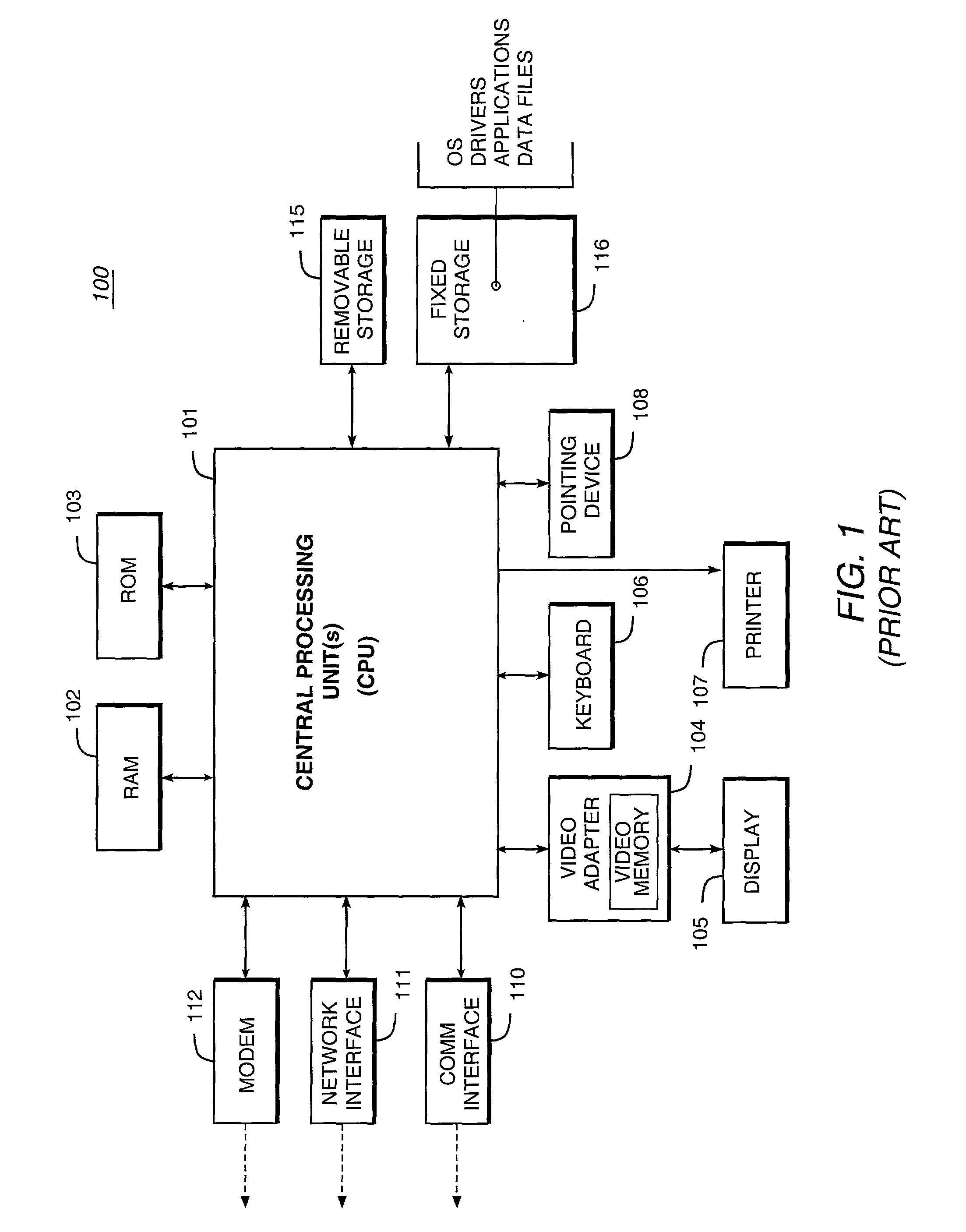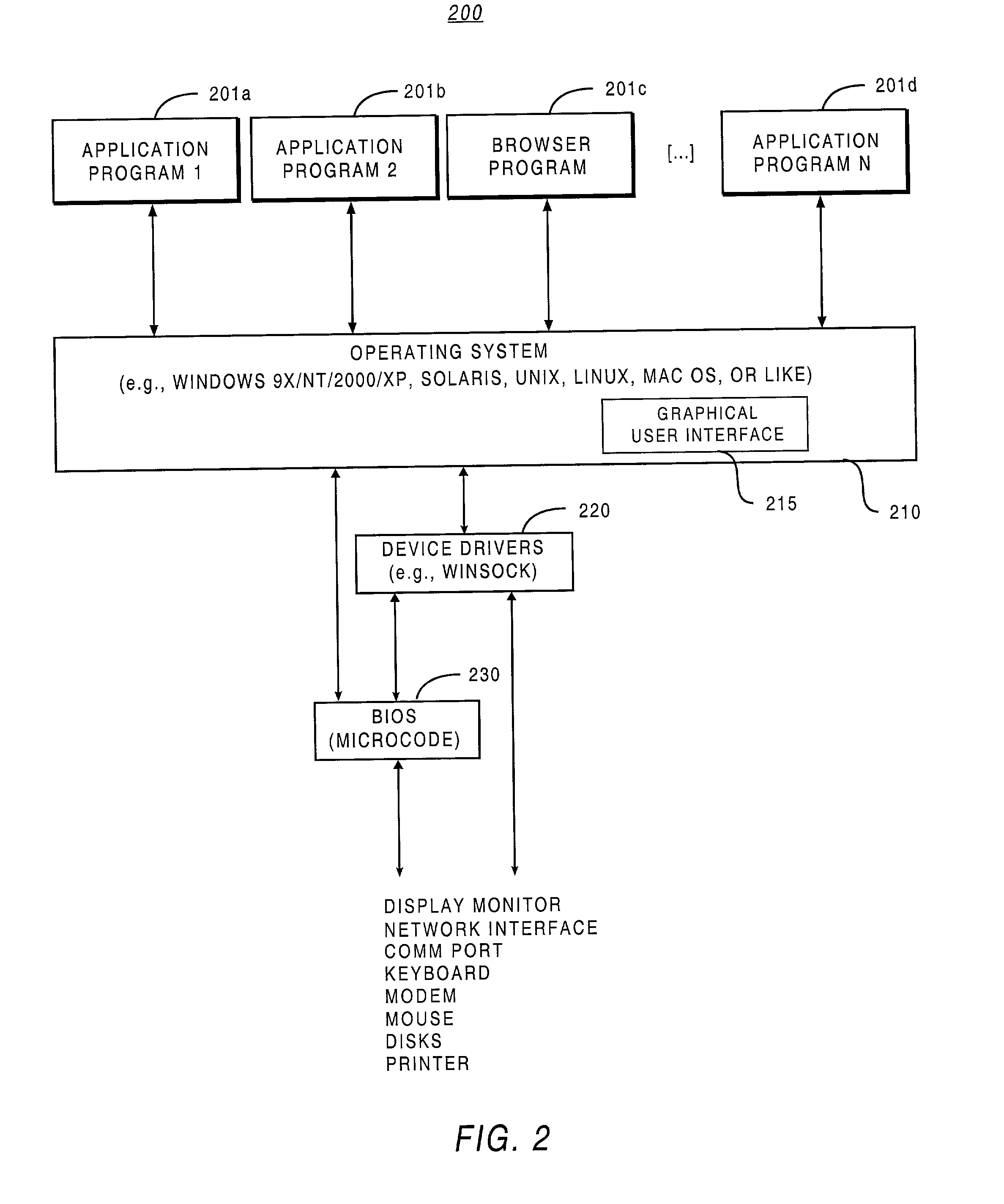In both cases, maintaining security and controlling what information a computer user could access was relatively simple because the overall computing environment was limited and clearly defined.
Specific challenges, for example, include the following: (1) attacks by perpetrators (hackers) capable of damaging the local computer systems, misusing those systems, or stealing proprietary data and programs; (2) unauthorized access to
external data (e.g., pornographic or other unsuitable Web sites); (3) infiltration by viruses and "
Trojan horse" programs; (4) employee abuse of business
computer resources for unauthorized personal activities (e.g., game playing); and (5) hording available network bandwidth through the use of bandwidth-intensive applications (e.g., real-time audio programs).
Such an approach is problematic.
Because of the centralized nature of firewalls and proxy servers, each approach extracts significant performance penalties.
Further, a centralized filter poses a significant
bottleneck even when the client computers are idly awaiting data.
As
emerging technologies on the Internet require still faster
data delivery (e.g., real-time audio and video feeds) and use more complex protocols, this problem will likely be exacerbated.
In the case of firewalls employing "Stateful Inspection" technology, performance problems are aggravated by the fact that the firewall
software needs to duplicate much of the protocol implementation of the client application as well as the transport protocol (e.g., TCP and UDP protocol) in order to understand the data flow.
Centralized filter architectures also miss vital information that is necessary to correctly interpret the data packets because the underlying protocols were designed for effective data transfer and not for
data monitoring and interception.
There are still other disadvantages to centralized filtering.
These centralized filters are usually difficult to configure and administer.
The task of setting up different rights for different users, workstations, or workgroups, for instance, is particularly difficult.
Also, a centralized filter cannot distinguish between "active" use of the Internet (i.e., when user interaction with a
personal computer ("PC") causes the
Internet access) and "background" use (i.e., when an application accesses the Internet without user interaction).
Similarly, the proxy-
server approach requiring special versions or specialized configurations of client applications is unattractive because of the resulting
system administration complications.
Internet setup for PCs employed at remote locations is particularly complicated.
At the other end of the spectrum, many small business and home users have neither the equipment nor the expertise to deploy and manage sophisticated security systems to protect the information they maintain on LANs or individual computers that are connected to the Internet.
From a security standpoint this represents a significantly increased challenge as these
broadband connections offer a wide channel that is typically always on and therefore always open to
attack.
Adding to this
threat is the fact that the vast majority of small business, home office and other individual users are using
Microsoft Windows operating systems and application programs, which contain a number of well-known security holes.
However, the
first generation of personal firewall products were very difficult to deploy and operate.
Unfortunately, proper configuration and operation of these programs required significant technical knowledge.
Thus, even if deployed, these personal firewall products provided only limited protection to the majority of users.
Earlier personal firewall products (e.g., SonicWALL) did not monitor what applications the user was running on his or her
machine and therefore provided little or no protection against this kind of outgoing
data theft.
However, in the typical LAN serving small organizations the operations of every
machine connected to the LAN are usually not closely monitored or centrally controlled.
Typically in these smaller networks the machines are not tightly managed because small organizations do not have large
information technology departments to establish and enforce common security and operational procedures.
Also, even if appropriate
security software is deployed, security may be at risk when one or more users inadvertently or intentionally disables his or her
security software.
A user might also intentionally disable his or her security
software if he or she believed that the security
software was causing a problem or delaying his or her operation of a particular application.
Second, in the same way that a single user can jeopardize the security of a network, a
Trojan horse program can cause similar damage.
In certain cases a user may receive and inadvertently run malicious code that is intentionally designed to avoid established
virus filtering programs.
If it is difficult or time intensive for a user to download the required software or comply with the security procedures, then he or she is more likely to
resist compliance.
To date, available security products do not address these problems.
MD5 is a one-way
hash function, thus making it nearly impossible to derive the original text or data.
If a computer has not properly responded or if a computer has not answered the router challenge, then the computer is not allowed to connect to the Internet as requested.
 Login to View More
Login to View More  Login to View More
Login to View More 


